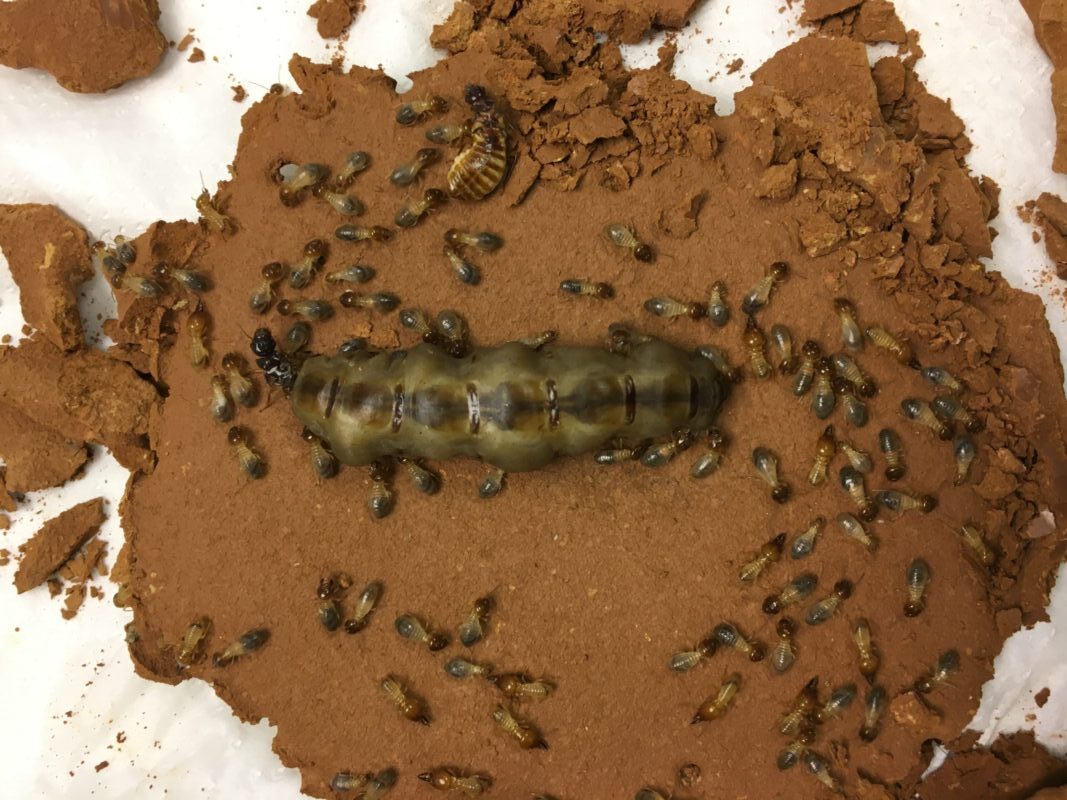Kings and queens of social termites can live for decades, while queens sustain a nearly maximal fertility. We found that they defy aging by multiple gene expression and metabolic changes, while permitting extreme fertility in queens.
Among social insects with specialized castes, sterile castes such as workers often live much shorter than queens which reproduce. Termites are special, because next to queens, kings also live for very long in many species. Queens and kings then both seem to be able to avoid aging for very long, while queens produce an enormous number of offspring. This entails a cost of reproduction in many organisms, but not in these termites.
In this HFSP funded project, an international team composed of a molecular biologist of sugar and lipid regulation (M. Vasseur-Cognet), a field biologist (W. de Beer), bioinformaticians (E. Bornberg-Bauer and M. Harrison), a biologist of adipocyte metabolism (H.S. Sul) investigated this exceptional example of long healthy lifespans with the help of a theoretical biologist (T. Van Dooren). The team utilizes the highly social termite, Macrotermes natalensis (Termitidae, Blattodea). Queens in this species lay thousands of fertile eggs per day for up to forty years while workers which are sterile live only a month on average.In this project, we looked into gene expression differences and differences in concentrations of metabolites between workers and kings and queens. Most of the analysis was carried out on fat bodies, which are nutrient storage organs in insects. We found multiple changes in gene expression between castes and differences in concentrations of metabolites. Moreover, we managed to describe at which stage of colony development the changes in queens occur after a king and a queen have established a new colony.
Which mechanisms do queens and kings both use to defy aging?
In molecular biology, several mechanisms of aging are being studied. We found that queens and kings address several of them simultaneously. The functioning of mitochondria, the energy factories of each cell, is assured by upregulating their activity and assuring the production of new mitochondria. DNA errors are being repaired. Protection mechanisms against oxidative damage are not intensified, but we can explain this by changes in the lipid composition of membranes, which makes defence against oxygen damage less necessary. In humans, the disruption of insulin signaling can lead to diabetes or damaging fat accumulation. Surprisingly, we found that the insulin pathway specific to queens and kings in their fat bodies becomes upregulated with age. Important is that we found that this activation does not lead to fat accumulation.
Which mechanisms occur specifically in queens?
Patterns in gene expression and metabolites support the notion that termite queens are extremely efficient egg factories, with no detrimental effects of intensive egg production on lifespan.
A car breaks down when any of its component systems breaks down. This notion is well known as “the chain is as strong as its weakest link”. We found that queens and kings of highly social termites reinforce several links in the chain and that queens assure that reproduction does not weaken them either. The consequence of all this might be that termite workers are in fact the weakest links which are destined to take all the blows. All termite castes develop from the same type of eggs and there are no genetic differences between them. This implies that all caste differences occur by non-genetic changes and have an environmental or social origin. When we understand how the differences which prolong lifespan originate and how they are controlled, this might help us to propose mechanisms of controlling aging in humans.
Publication
Sarah Séité, Mark C. Harrison, David Sillam-Dussès, Roland Lupoli, Tom J. M. Van Dooren, Alain Robert, Laure-Anne Poissonnier, Arnaud Lemainque, David Renault, Sébastien Acket, Muriel Andrieu, José Viscarra, Hei Sook Sul, Z. Wilhelm de Beer, Erich Bornberg-Bauer and Mireille Vasseur-Cognet. Communications Biology, 2022. doi: 10.1038/s42003-021-02974-6
Contact
Vasseur-Cognet Mireille, iEES Paris, CR INSERM, PI HFSP






